(ARCHIVE FEVER) Haunted by the Lattice: MidJourney, Mercer and Ashbery, by Ian Macartney
- Ian Macartney
- Dec 6, 2022
- 10 min read

In this essay for Archive Fever, Ian Macartney takes an AI-powered stroll through the poetic thinking of Lucy Mercer's Emblem and John Ashbery's Flow Chart, reenvisioning what it means for a poem to create an image. What happens when poems stands as an input — not to the reader's imagination but rather machine poeisis? Can the emergence of this second unconscious from the interstices and detritus of human activity online think, create and haunt us in the same way that our unconscious does? 'Does MidJourney, in the Platonic cavern of Discord chat, dream forth what images text conjures in a reader’s mind, internal, unseen, from the flickers of data-flame?' Macartney examines the machine's propensity for grids and lattices, recursions and loops, as useful — and uncanny — aides to poetry's 'murky contemplation.'
I
Writing is a relationship with machines. Text results from a symbiosis between technology – quill, pen, typewriter – and an acting agent, the writer, writers. Humans. Usually some guy. The twenty-first century exemplifies this collaboration. When the computer, laptop or smartphone takes hold as the locus for textual creation, writing becomes the result of a response to haptic stimulus (a pressed key, a finger on glass). Said machines are so sophisticated they also edit, sweeping for grammar and punctuation errors. They even impose directly on the creative process – think of autocorrect adding some strange new bright word into a draft, which fits the work, so gets kept by the author.
But there’s more. With the dominance of the machine in our lives comes the dominance of writing – which is to say, writing as the central node from which all creative processes, in the contemporary moment, are derived. Coding, after all, is writing which tends explicitly to the creation of an entire world billions engage with on a persistent basis: the digital. In some way this ‘writingification’ is the promise of the Sepher Yetsirah, “where all things are produced by the divine permutation of the alphabet” [1].
MidJourney literalises such a promise, the realisation of this contemporary trend – it allows for text to be the explicit propagator of the image. Like Dall-e, MidJourney is an AI-powered text-to-image generator. Via the chat client Discord, textual input generates four images, each of which can be upscaled to better quality, or used to spur another variation of four. This, for example, is what came from 'hyperaberdeen'
(for me, this one time – the exact same input can give myriad results when repeated):

Though it need not be so defined. The following emerged from the input '64. 3. 3. 98 Analog Drive 5 6. 2. 0. 0', an accidental copy-paste of text from GarageBand:

Or this poetic pseudo-incantation, automatic free-writing done on the spot: 'the word Language spelled all across the diagonal axis of our mutual love, our golden tandem, yeah!':

In MidJourney the relationship with machines that is writing is pushed further. The writer, in their relationship to the machine, directly creates an image, external to themselves, beyond the ‘image in their head’. The uniqueness and characteristics of an image depend on the writer’s capacity for creating vivid interesting text. They ‘write’ an image into being, images spurred directly by words, the writer’s apparatus. Text begets image. The visual is superseded by the textual, image the result of writing, and it is because of machines that this is possible.
So what images do poems create?
I decided to throw Lucy Mercer’s 'Speaking Pictures', the final poem in her debut collection Emblem, into MidJourney. It seemed apt. Mercer’s collection is an engagement with a visual form, the Renaissance hybrid art of the ‘emblem’, a 'genre of square images set against mottoes or proverbs more or less descriptive of the images, often didactic, sometimes laced with a suddenness', as Nasim Luczaj summarises in her review of Mercer’s collection [2]. The poems in Emblem are responses to, engagements with, the image; they are ekphrasis of a delayed kind.'Speaking Pictures' doesn’t quite risk being a manifesto for the entire book, per se, but it does make a series of statements on the topic at hand:
Some like to speak for the picture – some pretend the picture is speaking – but a picture never has – and never will – speak – a picture is a cultivar of image – and no image ever has – or ever will – speak [3]
The veracity of these claims come into question when the speaker notes that 'writing is just one type of picture – only the voice and body speak in language – like how I am speaking in this cavern now.' [4] For text on a page to ‘speak’ is paramount to text creating images – impossible, as per the conventional standards of these forms.It calls to laterally think outwith presented literalism,to make the leap.And what cavern, what dark place? This is the singular puncture of an otherwise abstract rumination; it creates a space for the poem to occupy, a specificity that denies the text to itself be emblematic. Text doing the work of imagery, in other words, transitioning from ‘pure’ text as per the series of definitive statements contained within, aphoristic, to description, text as response to an image (such is simile, a textual strategy defined by said relation being made evident – 'like', etc.). Now there is a ‘speaker’, not Speaker. Now there is an environment for said speaker. The text erodes from axioma to surface, implication not explanation. 'These phrases only pose as insights', Luczaj notes, 'a kind of suggestion of discourse […] the instinct to upturn something.' [5]
Mercer notes in the preface to Emblem that 'speaking pictures' is another name for emblems, 'as they give impossible voice to images, just like dreams.' [6] As if the picture has consciousness, subconsciousness – like a picture could dream, propelled entirely by Luczaj’s sense of ‘instinct’. Does MidJourney, in the Platonic cavern of Discord chat, dream forth what images text conjures in a reader’s mind, internal, unseen, from the flickers of data-flame? In this particular twenty-first-century-flavoured relationship with machines writing does the impossible – it becomes the catalyst for the image, not just as correspondent, as it was in the age of the emblem. It is the kind of complicated entanglement Mercer strives for, actualised, which is to say it is the emblem’s very dream come to (digital) life.
To put in 'Speaking Pictures' I first typed the entirety of it out, via my Notes app. The dashes disappeared in this process; there was no punctuation. MidJourney, moreover, imposes its own limits – it forgoes any lineation in text. It’s prose or bust. For 'Speaking Pictures' this did not involve too much of a recalibration, because it already appears on the page as a prosaic chunk – not quite the clear-cut square of an emblem, but approximating this, a visual indicator of the ways language may approximate an image, but not quite get there (… until it exists as input for an AI).
These were the first four images created from 'Speaking Pictures':
Notice how the self-consciousness of the poem, the addressing of its composition, a text —and subject —of the image, translates over in the persistence of framing. The first takes ‘picture’ to a modern extreme., translating it as ‘Polaroid’. Likewise the second, though it could also be a landscape portrait. The third represents (for me) a slide in a museum archive, the cupboard drawer opened to reveal a portal to another halcyon world, a deferred landscape. Within these frames are smudgy pastoral scenes – a meadow through a TV’s glaze in the third, sunset on a lake in the second, Rothko-esque sunset over the ocean in the first. The poetic compulsion to represent a visual splendour, à la the Romantics, still persists here, just with the awareness of such a project’s limits, the framing inherent in that endeavour, a boundary before even the boundary of the .png, where the composition ends and the rest of the webpage ebbs on.
'Picture-skew', I learned from Art Allen, can be used as another term for ‘picaresque’. It’s a fitting malapropism – MidJourney creates, from writing, pictures which skew whatever initial (originary) poetics was in the source, while still achieving – attributing – responses to poetic beauty, even if said beauty is not a direct actual source but the imagining of a source, the subconsciousness of MidJourney whirring to produce from what appears to be nothing but may, in fact, be the internet's dream of the sublime, its terabytes of image banks. The way text dreams forth images that do not exist, except when internal, thought-of. Almost the picture, but off by a bit.
Compared to the other three, the fourth image is considerably more abstract. I was captivated by its grid-like structure, the latticing, a sense of brickwork. Was there something in the careful considered attuning of poetic language which compelled MidJourney to translate textual particularity as physical structure, structuring?
I created variations to flesh this out:
As MidJourney expresses variations of itself, variations upon variations, the textual source honed in to this avenue of visuality, the mosaic patterning cracks, breaks, erodes. MidJourney witnesses brick and renders forth the dissolution of brick, of structures, forever sending them to ruin. The grid persists, but at what cost? The lines lie warped, expanded – like how MidJourney takes a poetic line, flattens it to a prosaic chunk, then expands again to the fit the borders of a Discord chat box.
In other words, MidJourney re(t)reads the poem so much the image becomes worn. But always that frame – always the knowledge that something is looked at, at such looking will not be everything the poem could be.
II
I wanted to see if this structuring, the motif of lattice and brick, would repeat elsewhere. I turned to the opening lines of John Ashbery’s 1991 book-length poem, Flow Chart:
Still in the published city but not yet overtaken by a new form of despair, I ask the diagram: is it the foretaste of pain it might easily be? Or an emptiness so sudden it leaves the girders whanging in the absence of wind , the sky milk-blue and astringent? We know life is so busy, but a large activity shrouds it, and this is something we can never feel, except occasionally, in small signs put up to warn us and as soon expunged, in part or wholly. [7]
What is the internet, the digital, if not 'the published city […] overtaken by a new form of despair', 'the diagram' to be asked? Trillions of words jittering in socially-mediated matter, compounded via machine, enshrouded in persistent expressions of sociocultural doom and anxiety, self-fashioned, text’s affect being the affect felt by recipients of text. Flow Chart is an internet unto itself, a poem which digresses as if autonomous, seemingly automatic, ‘uncreative’ in a sense, as if an algorithm is spouting line after line across 220-odd pages. It is poetics as data, data flowing through the poem’s namesake. There is, here, ‘a suggestion of discourse', to reborrow Luczaj’s phrase – things occur in negation, 'girders / whanging in the absence of wind', said absence an acting force within the text. Anything within a frame becomes contingent on the image; how is a visual representation of ‘nothing’ possible? Can MidJourney give an 'impossible voice' to this rendering of nothing, the absence of wind? Herein lies what I’ve called before ‘Abstract Fantasy’, 'an aesthetic style that aims to highlight how writing can transcend the image by describing the abstract and unseen in tangible terms.' [8] MidJourney allows for the reverse-engineering of this ideal.
Ashbery also fits MidJourney because of his ekphrastic writing style, a poetics informed by twenty years of work as an arts correspondent. His most famous piece 'Self-Portrait in a Convex Mirror' is a long essay-poem on Parmigianino’s painting of the same name, which acts as a portal to ruminations on his time in Paris. 1999’s Girls on the Run, meanwhile, explores the work of American outsider artist Henry Darger. It’s important to remember, however, that Ashbery 'engaged with the experience of seeing, or hearing' artworks, as Jefferey Lependorf notes, as a way to explore 'how the artistic strategies employed offer ways of thinking', beyond mere response [9]. Ashbery’s text teases the vastitudes of experiencing image, versus being ‘imagistic’ in the more typical sense. However MidJourney was to express the first lines of Flow Chart would be to visually represent that which was ‘implicit’, therefore – to make the aesthetic subconscious explicit, render it surface. For what could be interior in something entirely dependent on what was visible?

Instead of writing these lines out, as I did for Mercer, I copy-pasted them from an online version. I was curious as to the effect the raw data feel of the text would have on MidJourney’s output. How would it take the numbers – as interruptions? Punctuation? Co-ordinates? And what of the distinct gap after the '12'? MidJourney representing 'the absence of wind' was one thing, but would it take into account an actual gap amongst words? What was blank space in the language of input?
Here were the results:
'Milk-blue' and 'city' set the scene, as too the inclusion of 'river'. The 'larger activity:', in this visual vocabulary, becomes urban expansion – docklands. I think of Edward Hopper, Wong-kar Wai, Lou Ye’s Sūzhōu Hé. And still that whirring trend, the latticing across the image! Most notably in the first, those panels and windows and lines through what appears blue brick, but also the panels of the bridge in the fourth, the reflection on the water in the third. I make variations of the first, to bring out the scaffolding – the scansion of poetic language visualised – even further:
Again, the erosion from movement to a source – the obliquity of Ashbery’s text continues to bisect and trisect and quarter the image, revealing innumerable frames from that singular chunk of prompt. 'An image means nothing', Antonio Tapies says, for 'it is just a door leading / to the next door' [10]. If MidJourney cannot express nothingness, than at the very least can it, in an Ashberyian flourish, ‘mean’ nothing? By interpretating input MidJourney’s images reveal that 'murky contemplation' Mercer talks of [11], where there is no indexical conjecture to be taken in the relation between text and image, only the (digital) persistence of perception.
If our millennia-long relationship with machines now flourishes to the point it can conjure images external to our minds, images that ‘actually’ exist, then now the complexities of language preside over the image... Like MidJourney scouring its huge image-bank when responding to text, the pattern-making at the heart of semiosis keeps going as well – the panels in the image, the lattice, only need shoved, it seems, rusted and flimsy as they may appear, to open like a door into other worlds, new images which are but Tapies’ 'the next door'.
Ultimately, what emerges in MidJourney is the machine as a component of the relationship which empresses difference, infinitely, through writing. The machine continues the work of language long after the human has clicked the final button, ceased its input, opening the door to innumerable data sets which exist as their own portals of representation. For these images are catalysts to representation – reflections which open 'to another door, to another door, to another door' [12].
References:
[1] David Maclagan, Creation Myths: Man’s Introduction to the World (London, UK: Thames & Hudson, 1977), p. 93
[2] Nasim Luczaj, '(REVIEW) Emblem, by Lucy Mercer', accessed September 10th 2022 at https://www.spamzine.co.uk/post/review-emblem-by-lucy-mercer
[3] Lucy Mercer, Emblem (London, UK: Prototype, 2022), p. 103
[4] Mercer, Ibid
[5] Luczaj, Ibid
[6] Mercer, p. 9
[7] John Ashbery, Flow Chart (Manchester, UK: Carcanet, 1991), p. 3
[8] Ian Macartney, “ENO’s 2019 Production of Akhenaten and Abstract Fantasy” accessed September 10th 2022 at https://www.expostmag.com/post/eno-s-2019-production-of-akhenaten-and-abstract-fantasy
[9] Jefferey Lependorf, “Editor’s Note” in John Ashbery, Something Close to Music: Late Art Writings, Poems, Playlists (New York, NY: David Zwirner Books), p. 11
[10] Writers’ Shift, ed. Iain Morrison (Edinburgh, UK: Fruitmarket Gallery, 2022, p. 135)
[11] Mercer, p. 9
[12] Caroline Polachek, 'Door' (Perpetual Noise, 2019)
~
Text: Ian Macartney
Images: MidJourney
Published: 6/12/2022
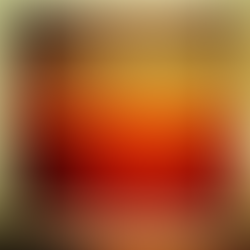





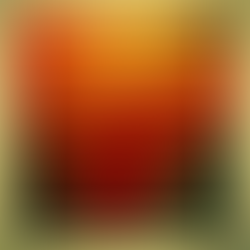


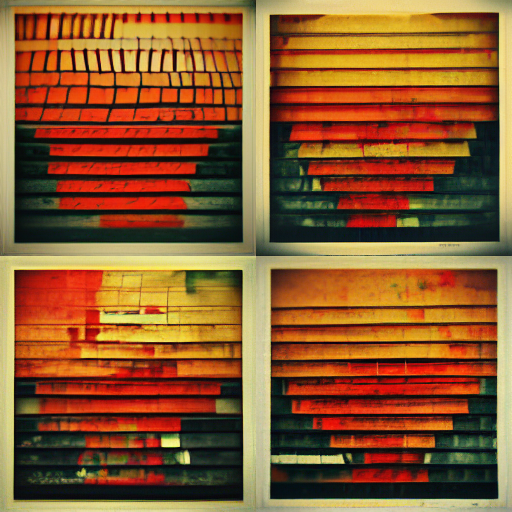

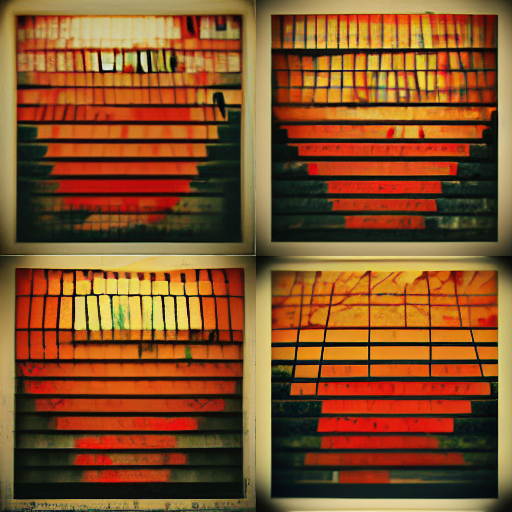

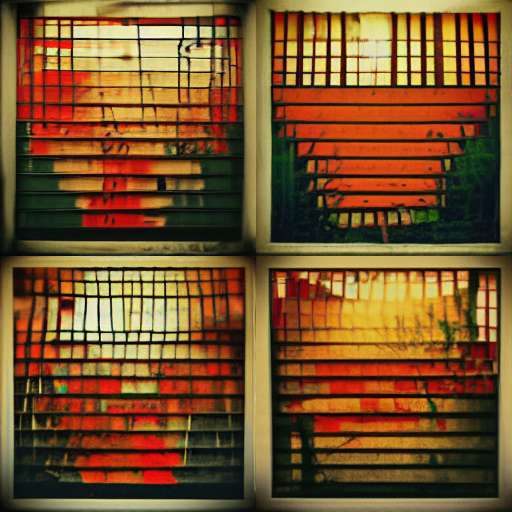

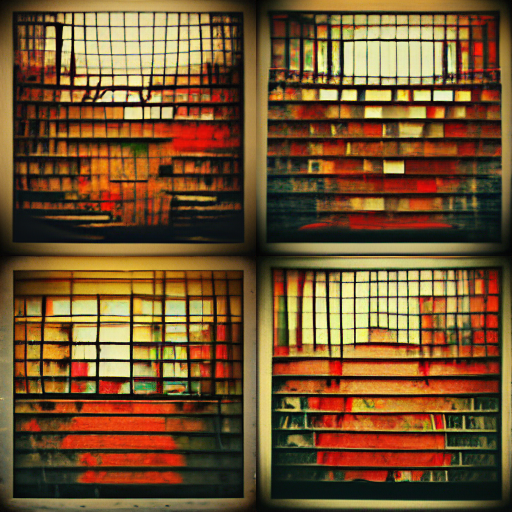














Comments